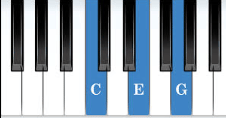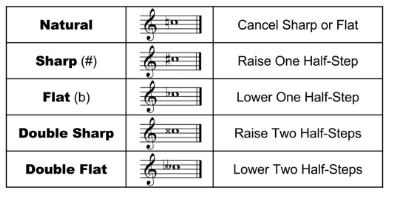Worksheet Solutions: Music Theory and Chords | Piano Tutorials Course: Beginners to Advance - Class 6 PDF Download
| Table of contents |

|
| Multiple Choice Questions (MCQs) |

|
| Fill in the Blanks |

|
| Match the Following |

|
| True or False |

|
Multiple Choice Questions (MCQs)
How many notes are there in a standard major scale?
A) 5
B) 6
C) 7
D) 8Correct Answer: C
Explanation: A major scale consists of 7 unique notes, with the 8th note being the same as the first but an octave higher.
What is the formula for a major scale in terms of whole steps (W) and half steps (H)?
A) W-W-H-W-W-W-H
B) W-H-W-W-H-W-W
C) W-W-W-H-W-W-H
D) H-W-W-W-H-W-WCorrect Answer: A
Explanation: The correct major scale formula is Whole-Whole-Half-Whole-Whole-Whole-Half, which creates the specific sound of a major scale.
Which notes make up the C Major chord (triad)?
A) C - E - G
B) C - D - E
C) C - F - G
D) C - G - BCorrect Answer: A

Explanation: The C Major chord consists of the 1st (C), 3rd (E), and 5th (G) notes of the C Major scale.
What does an inversion of a chord mean?
A) Changing the order of notes within the chord
B) Playing the chord faster
C) Playing only the bass note of the chord
D) Playing the chord with only one handCorrect Answer: A
Explanation: A chord inversion means changing the order of the notes, so a different note is in the bass position.
Fill in the Blanks
A __________ is a group of three or more notes played together to create harmony.
Correct Answer: Chord
Explanation: A chord consists of multiple notes played simultaneously, typically a triad (three notes).
The first note of any major scale is called the __________.
Correct Answer: Root
Explanation: The root note is the starting note of a scale or chord and determines its name.
A sharp (#) raises a note by a __________ step.
Correct Answer: Half
Explanation: A sharp increases the pitch of a note by a half step, moving it to the next closest key on the piano.
Match the Following

Correct Answer: 1 - C, 2 - B, 3 - A, 4 - D
Explanation:
- A major scale follows a set pattern of whole and half steps.
- A flat (♭) lowers a note by a half step.
- A major chord consists of a root, third, and fifth note. C-E-G is an example of this chord type.
- A chord inversion changes the order of the notes in a chord.
True or False
A major scale consists of both whole and half steps. (True)
Explanation: The major scale follows the pattern W-W-H-W-W-W-H, combining whole and half steps.A sharp (♯) lowers the pitch of a note. (False)
Explanation: A sharp raises the pitch of a note by a half step, while a flat (♭) lowers it.
The C Major scale contains only white keys. (True)
Explanation: The C Major scale (C, D, E, F, G, A, B) consists entirely of white keys with no sharps or flats.
|
45 videos|12 docs|6 tests
|
FAQs on Worksheet Solutions: Music Theory and Chords - Piano Tutorials Course: Beginners to Advance - Class 6
| 1. What are the basic components of music theory that one should understand? |  |
| 2. How do chords function in music theory? |  |
| 3. What is the difference between major and minor chords? |  |
| 4. How can one practice music theory effectively? |  |
| 5. Why is understanding rhythm important in music? |  |




















